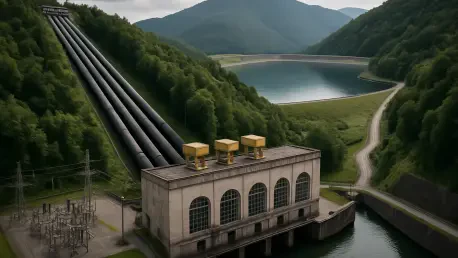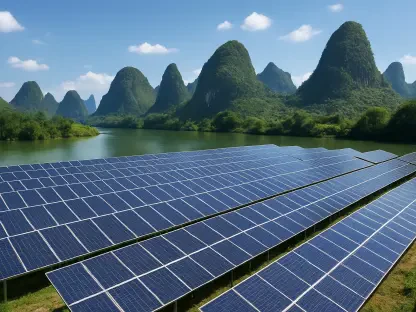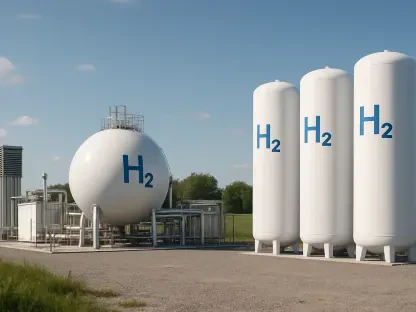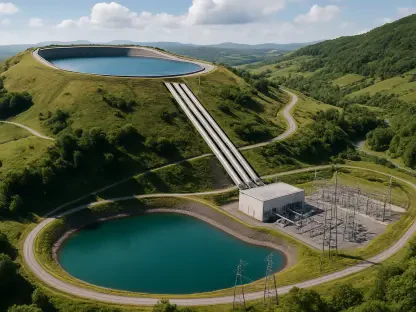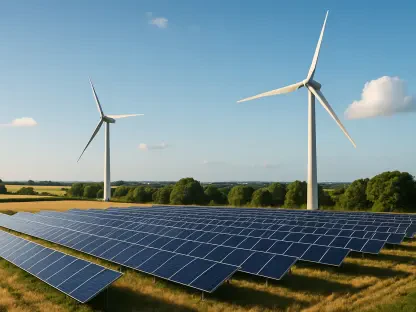The global hydropower sector is witnessing a significant surge, highlighted by a marked increase in pumped storage hydropower (PSH) capacity. This rebound is substantial, with approximately 24.6 gigawatts of new capacity added in hydropower worldwide and a notable 10% increase in hydropower generation, reaching 4,578 terawatt-hours. These figures signify a recovery from the previous year’s setbacks due to drought conditions, underscoring hydropower’s growing momentum as a critical component in clean energy production and storage.
Overview of the Global Hydropower Industry
Hydropower stands as a pivotal part of the renewable energy landscape, driving advancements in energy resilience through storage capabilities. Key segments within the industry include conventional hydropower plants and PSH systems, both heavily influenced by technological advances aimed at enhancing efficiency and grid integration. Major players populate this industry, contributing to its dynamic evolution amidst stringent environmental and energy regulations that guide its practices and expansion efforts.
Trends and Growth in Hydropower
Key Trends Driving Industry Growth
Prominent trends propelling hydropower’s growth include a heightened emphasis on PSH development, reflecting the burgeoning demand for energy storage solutions that facilitate renewable energy integration. Emerging technologies, such as advanced turbine designs and digital grid management, are reshaping operational efficiency and sustainability, offering new opportunities for investment and expansion in this sector.
Market Data and Projections
Market data paints a promising picture for hydropower, with current growth trajectories indicating robust upward trends. Future projections suggest sustained performance, bolstered by increasing global capacity, particularly in PSH. This optimistic outlook is underpinned by performance indicators pointing to significant potential in meeting renewable energy targets, further integrating hydropower with other energy sources like wind and solar.
Challenges and Complexities
While optimism abounds, the hydropower industry faces multifaceted challenges. Technological hurdles, such as grid adaptation and storage efficiency, demand innovative solutions. Regulatory constraints and market fluctuations present further obstacles that necessitate strategic planning. To overcome these challenges, entities within the industry must pursue adaptive strategies, foster advancements in technology, and advocate for policies that support hydropower’s benefits.
Regulatory Landscape and Compliance
Regulations profoundly impact hydropower expansion and operations, with laws and standards continually evolving to accommodate environmental concerns and energy demands. Compliance and security measures are critical aspects, ensuring that industry practices meet set guidelines while promoting sustainable development. Navigating this complex landscape requires vigilant attention to policy shifts and proactive engagement with regulatory bodies.
Future Prospects and Innovations
The future of hydropower is intertwined with innovation and the emergence of disruptive technologies that promise to revolutionize energy production and storage. As global economic conditions shift, hydropower’s role in facilitating renewable energy transitions becomes increasingly vital. Innovations, particularly in PSH technology, could redefine efficiency metrics, promising to expand market reach and catalyze growth.
Conclusion and Recommendations
The hydropower industry has made strides in fortifying its position within the renewable energy sector, as evidenced by increased capacity and renewed momentum. However, addressing upcoming challenges and leveraging regulatory changes are crucial steps for continued progress. Stakeholders are encouraged to invest in technological advancements and policy reforms that enhance hydropower’s integration into sustainable energy solutions, ensuring balanced growth and the realization of future ambitions.
